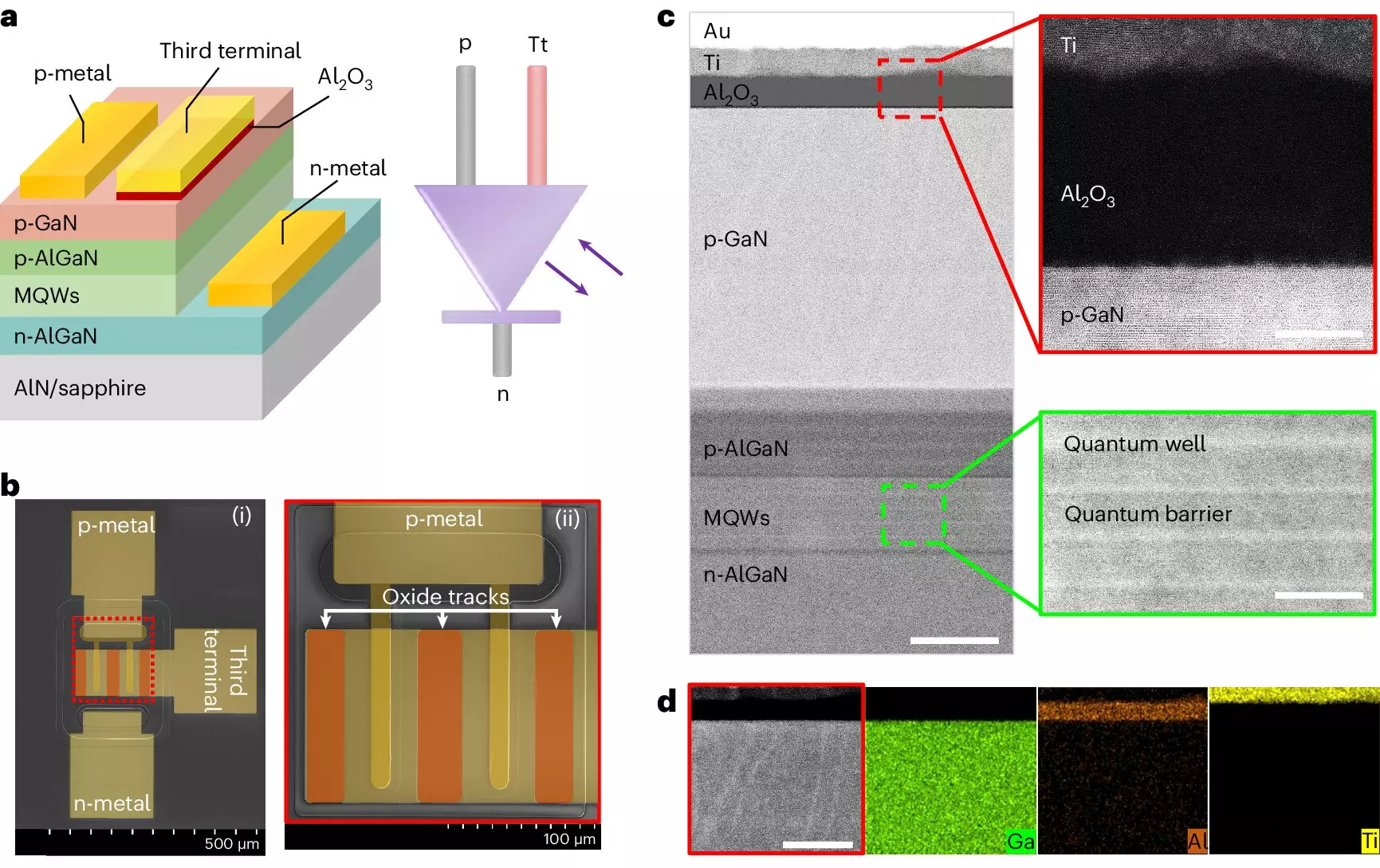Optoelectronic devices are crucial components in modern electronic systems, enabling the transmission and reception of light signals. Traditional two-terminal devices have limitations that can restrict the performance and functionality of these systems. However, a recent breakthrough in three-terminal diode technology by researchers at the University of Science and Technology of China promises to revolutionize the field of optoelectronics.
Led by Prof. Haiding Sun, the team at the iGAN Laboratory in China has developed a new three-terminal diode that can both emit and detect light. This innovative device combines a gallium nitride-based p–n diode with a third terminal consisting of a metal/Al2O3 dielectric layer. This third terminal allows for modulation of light intensity by adjusting the bias applied to it, enhancing the device’s modulation bandwidth significantly.
The three-terminal diode designed by Prof. Sun and his team not only serves as an advanced light emitter but also as a photodetector. By utilizing voltage and incident light as inputs, the device can establish reconfigurable NAND and NOR optoelectronic logic gates, showcasing its versatility and potential for use in optical wireless communication systems.
Initial tests have shown that the three-terminal diode can enhance modulation bandwidth by more than 64% compared to traditional light-emitting p–n diodes. This improvement is a significant step forward in the development of faster and more efficient optical communication systems. The ability to seamlessly switch between emitter and detector modes provides a dual-functional device architecture that can revolutionize data transmission methods.
The development of this new three-terminal diode opens up exciting possibilities for the future of optoelectronic devices. It could lead to the fabrication of OWC technology capable of transmitting data at higher speeds and the creation of innovative optically driven computing systems. Prof. Sun and his colleagues are continuing their research to refine the performance of the diode and explore integration with other optoelectronic materials and systems, paving the way for multifunctional and integrated electronic and optoelectronic systems.
The breakthrough in three-terminal diode technology represents a significant advancement in the field of optoelectronics. The multifunctional capabilities of the new diode offer enhanced performance and functionality, making it a promising solution for the development of advanced optical communication systems and optoelectronic computing technologies. With further research and development, this innovative approach could revolutionize the way we transmit and process data in the future.


Leave a Reply